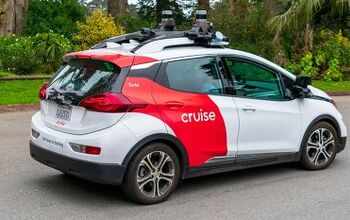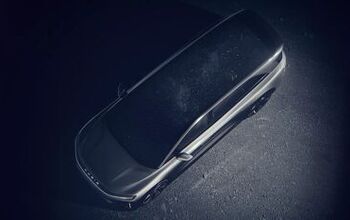Ghosn Puts on Third 'Mr. Chairman' Hat as Nissan Officially Takes Control of Mitsubishi

Mitsubishi has officially tied the knot with its savior, making Renault-Nissan chairman Carlos Ghosn the only automotive executive in the world (and possibly the galaxy) to head three companies.
The $2.29 billion deal gives Ghosn’s Renault-Nissan alliance a 34 percent controlling stake in Mitsubishi — a financial lifeline for the struggling, scandal-plagued automaker. Already, the company’s new chairman (and demoted former chair) have big, big plans for the Mirage maker.
Nissan-sized plans.
In addition to Ghosn plunking himself in the driver’s seat, three Nissan executives join Mitsubishi’s 11-member board. Trevor Mann, Nissan’s former chief performance officer, is now the new CEO. The automaker’s very apologetic former chairman and president, Osamu Masuko, keeps his “president” title, but nothing else.
Of course, all of this job shuffling still needs the green light from Mitsu shareholders. That should come in December.
What does the entry into the Alliance mean for Mitsubishi? The world, apparently. Earlier this month, Ghosn said the biggest impact would be felt in America. By tapping into Renault-Nissan’s engineering prowess and adopting its platforms and engines, the impact on Mitsubishi will be “massive,” he claimed.
As Ghosn dreams up the best way to inject new product life into Mitsubishi, Masuko’s mind is on reputation and all-important finances. In a statement, the company president claims the deal will “rebuild customer trust in our company and maximize potential future synergies,” with savings beginning right off the bat.
He expects to realize nearly a quarter-billion dollars in savings (“synergies” in executive speak) next year alone, and predicts a profit margin boost of five percent in the next three years. Speaking at the announcement, Masuko said he wants the brand to reach where Nissan is today. Or try to, at least.
The deal’s benefits aren’t Mitsubishi’s alone. Nissan, which lags in the hybrid technology department, gains its new partner’s advanced plug-in hybrid system, which Ghosn says will become the standard of the alliance. That system is at the heart of the company’s Outlander PHEV, a wildly popular model in Europe that’s on a very slow boat to the U.S.
Nissan also plans to make inroads in underperforming markets, including southeast Asia, where a rebadged Mitsubishi minivan will soon go on sale.
[Source: Automotive News Europe] [Image: Mitsubishi Motors]

More by Steph Willems
Latest Car Reviews
Read moreLatest Product Reviews
Read moreRecent Comments
- Tassos Jong-iL Not all martyrs see divinity, but at least you tried.
- ChristianWimmer My girlfriend has a BMW i3S. She has no garage. Her car parks on the street in front of her apartment throughout the year. The closest charging station in her neighborhood is about 1 kilometer away. She has no EV-charging at work.When her charge is low and she’s on the way home, she will visit that closest 1 km away charger (which can charge two cars) , park her car there (if it’s not occupied) and then she has two hours time to charge her car before she is by law required to move. After hooking up her car to the charger, she has to walk that 1 km home and go back in 2 hours. It’s not practical for sure and she does find it annoying.Her daily trip to work is about 8 km. The 225 km range of her BMW i3S will last her for a week or two and that’s fine for her. I would never be able to handle this “stress”. I prefer pulling up to a gas station, spend barely 2 minutes filling up my small 53 liter fuel tank, pay for the gas and then manage almost 720 km range in my 25-35% thermal efficient internal combustion engine vehicle.
- Tassos Jong-iL Here in North Korea we are lucky to have any tires.
- Drnoose Tim, perhaps you should prepare for a conversation like that BEFORE you go on. The reality is, range and charging is everything, and you know that. Better luck next time!
- Buickman burn that oil!


































Comments
Join the conversation
So, did they buy Mitsubishi Motors from Mitsubishi or Mitsubishi? There is a huge difference.
2018 Starion!!!